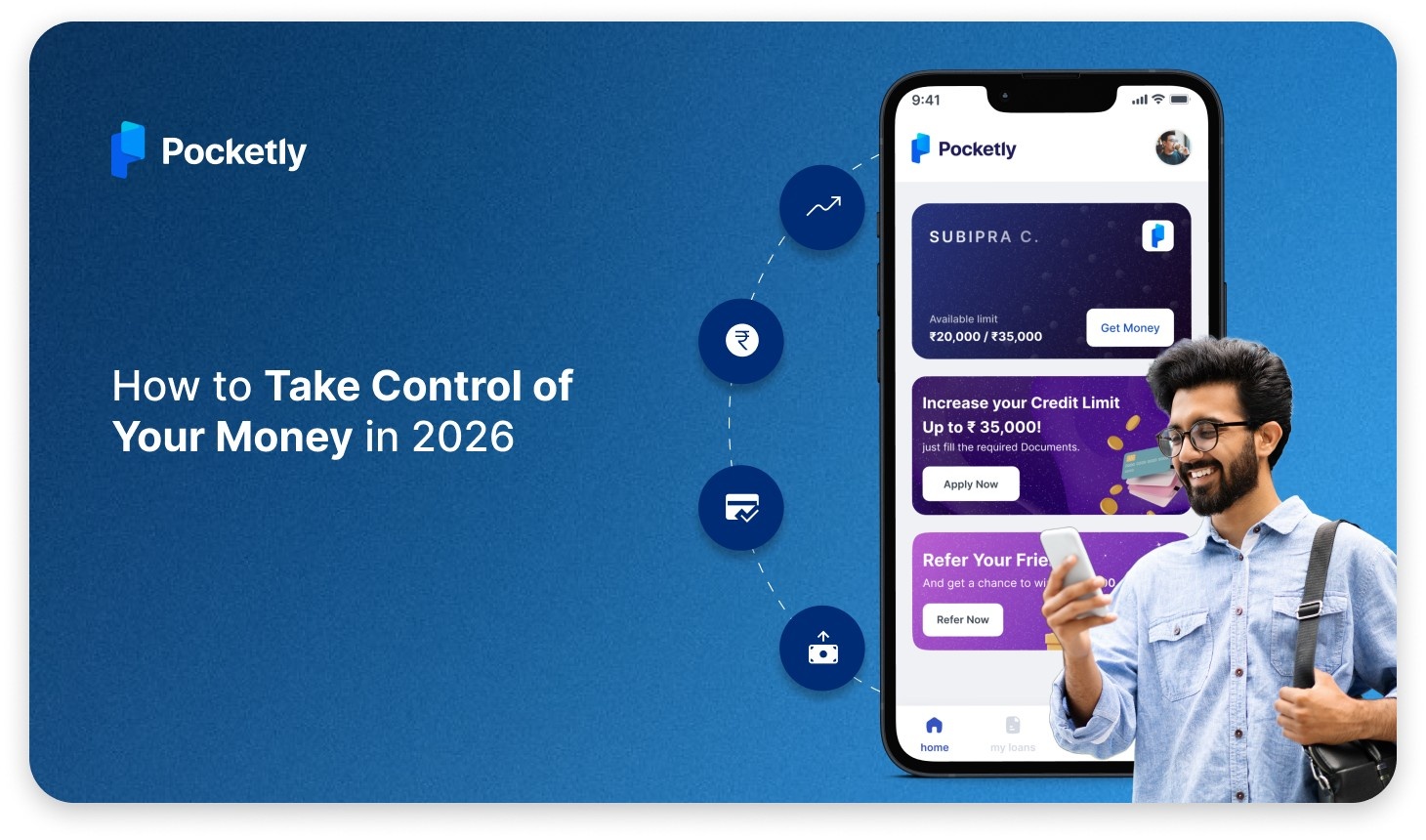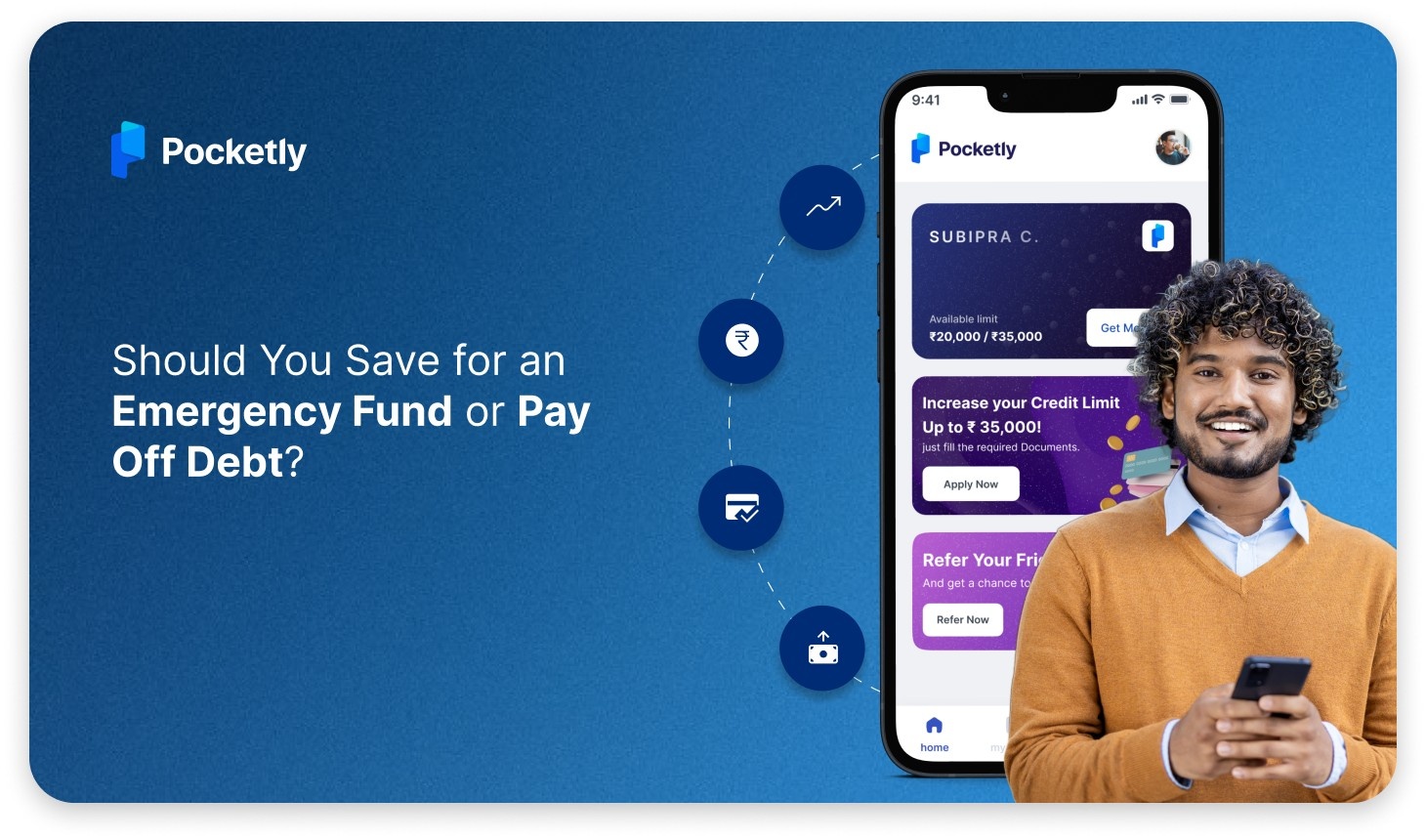
Ever wondered why your loan interest rate is what it is, or why it suddenly changes? The answer often lies in something called the Prime Lending Rate (PLR).
Put simply, the PLR is the base interest rate banks use when lending to their most trusted customers, usually those with a strong credit history. But even if you’re not one of those “prime” borrowers, the PLR still affects you. It acts as a starting point for most loan rates, meaning when it goes up or down, your borrowing cost likely changes too.
Understanding the prime lending rate meaning isn’t just for finance buddies, it’s for anyone who wants to make smarter decisions when it comes to personal loans, EMIs, or credit cards.
In this guide, we’ll walk you through what PLR actually is, how it’s decided, and how it could impact your next loan. Let’s make sense of it together.
What is Prime Lending Rate?
The Prime Lending Rate (PLR) is the interest rate that commercial banks charge their most creditworthy customers, usually large corporations or individuals with excellent credit scores. These are borrowers the bank sees as low-risk, so they’re offered the most favourable rates.
But here’s the thing: even if you’re not one of those top-tier customers, the PLR still matters. Why? Because banks often use it as a reference point to set interest rates for other types of loans, like personal loans, home loans, business loans, and even credit cards.
So when the PLR moves up or down, the interest rate on your loan might move with it (especially if you're on a floating or variable rate). That’s why it’s often called the benchmark rate for lending.
Why Is It Important to Understand This?
Knowing how PLR works can help you make better decisions when it comes to borrowing money. Here’s why it matters:
- It affects your loan interest rate
- If your loan is linked to PLR, changes in this rate can increase or decrease your monthly payments.
- It helps you understand what banks are offering
- When you compare loans, banks often say “PLR + 2%” or something similar. If you know the base rate (PLR), you can figure out exactly how much you’ll be paying.
- It gives you an idea of when to borrow
- Since PLR is connected to RBI policies and market trends, keeping an eye on it can help you choose a better time to take out a loan.
- It helps you plan your finances better
- Understanding how PLR affects your loan means fewer surprises in your EMIs, and more control over your money.
Knowing about PLR makes you a smarter borrower. It helps you save money, avoid confusion, and feel more confident when dealing with loans.
How the Prime Lending Rate Works
Now that you know what the Prime Lending Rate (PLR) is, let’s look at how it actually works behind the scenes. PLR isn’t just a random number; it’s influenced by several factors, especially the policies set by the Reserve Bank of India (RBI). Once set, banks use it as a base to decide how much interest they’ll charge different borrowers.
Here’s a breakdown of how the PLR works:
- RBI sets the base for lending rates
- The Reserve Bank of India (RBI) controls key interest rates like the repo rate, which is the rate at which banks borrow money from the RBI. Any change in this rate directly affects how expensive or cheap it is for banks to get funds.
- Banks revise their PLR based on the RBI’s policy rates
- When the RBI increases or lowers the repo rate, banks may raise or reduce their Prime Lending Rate to match the new cost of borrowing. So, PLR often moves in line with RBI decisions.
- PLR is offered to top borrowers
- This rate is usually given to borrowers who pose very little risk, like large, stable companies or individuals with a strong and healthy credit score and a clean repayment history.
- Other loan rates are calculated using PLR as a base
- Banks often price their loans as PLR + a certain percentage. For example, if a personal loan is PLR + 2%, and the current PLR is 9%, you’ll pay 11% interest. The extra percentage is based on your risk profile.
- Changes in PLR can affect your loan repayments
- If your loan is linked to the PLR and it increases, your EMIs could go up. If it drops, you might enjoy lower interest costs. This is especially true for floating or variable interest rate loans.
Understanding how PLR works helps you make better decisions about when to borrow, which loan to choose, and how changing interest rates might affect your finances.
Impact of Prime Lending Rate on Loans
The Prime Lending Rate (PLR) doesn’t just affect big businesses or top-tier borrowers—it can directly influence the cost of your personal loan, home loan, or any floating-rate loan. Since PLR acts as a benchmark for setting interest rates, any changes in it can impact how much you pay back to the bank.
Here’s how PLR affects your loans:
- It determines your loan interest rate
- Many loans are priced as “PLR + X%”. So if the PLR goes up or down, the total interest rate on your loan changes too, especially if you're on a floating-rate loan.
- It affects your EMI (Equated Monthly Instalment)
- When PLR increases, your monthly loan payment can go up. If it drops, your EMI may reduce, helping you save money over time.
- It influences borrowing costs
- A higher PLR means borrowing is more expensive, which can affect your decision to take a new loan or refinance an old one.
- It impacts loan affordability
- When interest rates rise due to an increase in PLR, the same loan amount will cost you more in total repayment, which might affect your eligibility or loan approval.
- It reflects overall lending trends
- PLR gives you a sense of where the lending market is heading. If PLRs are rising, banks are likely tightening lending conditions. If they’re falling, it could be a good time to borrow.
Keeping an eye on the PLR can help you plan better, time your loans wisely, and avoid surprises in your monthly repayments.
Factors Affecting Prime Lending Rate
The Prime Lending Rate (PLR) doesn’t stay the same forever—it changes based on a variety of economic and financial factors. Since PLR influences many types of loan interest rates, it’s helpful to know what causes it to go up or down. Most of these changes are tied to how the banking system and the economy are performing.
Here are the main factors that affect the PLR:
- RBI’s policy decisions
- The Reserve Bank of India plays a key role in influencing PLR. When the RBI changes the repo rate (the rate at which banks borrow from the RBI), banks often adjust their PLR to reflect this change. A higher repo rate usually leads to a higher PLR.
- Cost of funds for banks
- Banks calculate how much it costs them to get money, whether it’s from the RBI, depositors, or the market. If their cost of funds goes up, they’re likely to increase the PLR to maintain profits.
- Inflation trends
- High inflation usually leads to higher interest rates across the board. To control inflation, the RBI may raise rates, which pushes banks to increase the PLR as well.
- Market liquidity and demand for credit
- If there’s a high demand for loans or a shortage of liquidity (cash flow) in the banking system, banks may raise the PLR to manage credit distribution and protect their margins.
- Currency exchange rate and global factors
- International economic conditions, currency fluctuations, and global interest rate trends (like US Federal Reserve decisions) can also influence the PLR indirectly.
- Bank-specific lending risks and internal policies
- Each bank also considers its risk assessment and financial health. A bank facing more defaults or tight liquidity may increase its PLR to cover potential risks.
By understanding these factors, you can stay more informed about why interest rates change and plan your borrowing accordingly.
Also, read our guide on Applying for Short-Term Loans Online at Lowest Interest Rates.
Prime Lending Rate vs. Other Rates
The Prime Lending Rate (PLR) is just one of several interest rate benchmarks used by banks. Depending on the type of loan and when you borrow, your interest rate might be linked to PLR, MCLR (Marginal Cost of Funds-based Lending Rate), EBLR (External Benchmark Lending Rate), or even the Base Rate.
Each rate has its structure, calculation method, and level of transparency. Understanding how they differ can help you compare loan options more confidently.
| Feature | Prime Lending Rate (PLR) | Base Rate | MCLR (Marginal Cost of Lending Rate) | EBLR (External Benchmark Lending Rate) |
|---|---|---|---|---|
| Meaning | Rate offered to top creditworthy borrowers; benchmark for loans | Minimum rate banks could lend at (before MCLR was introduced) | Rate based on bank’s internal cost of funds | Rate linked to an external benchmark like repo rate |
| Set By | Individual banks | Individual banks | Individual banks | RBI benchmark; banks add spread |
| Transparency | Less transparent; not regulated by RBI. | More transparent than PLR | Fairly transparent | Highly transparent and regulated |
| Review Frequency | As decided by banks | Periodic | Monthly or as decided by the bank | Automatically adjusts with changes in RBI benchmark |
| Who applies to it | Mostly used for corporate and older loans | Applicable to all retail and SME loans (before MCLR) | Retail and corporate borrowers (2016–2019 era) | Mandatory for all new floating rate retail & MSME loans |
| Flexibility in pricing | High flexibility for banks to adjust spreads | Moderate | Moderate | Low flexibility due to direct RBI link |
| Current Usage | Still used for certain older loans | Rarely used now | Still applicable to some older loans | Most new loans (home, personal, auto) now follow EBLR |
Understanding these differences will help you take a loan product that is more transparent, responsive to rate changes, and financially suitable for your needs. If you’re ever unsure, ask your bank what rate your loan is linked to—and how often it gets revised.
Which Loans Stay Unaffected by Prime Lending Rate?
Not all loans rise or fall with changes in the Prime Lending Rate (PLR). Some come with fixed interest rates, meaning the rate is locked in from the start and doesn’t change, even if PLR goes up or down. These loans offer predictability, making them easier to manage, especially if you're on a fixed budget.
Here are the types of loans that are usually not affected by PLR:
- Fixed-rate home loans
- These loans will come with a fixed interest rate for a set period or the full tenure. Even if the PLR increases, your EMI stays the same, offering stability in long-term planning.
- Fixed-rate personal loans
- Many personal loans, especially from NBFCs and fintech platforms, have fixed rates. This means your repayment amount doesn’t change, giving you peace of mind during the loan period.
- Fixed-rate student loans
- Some education loans, particularly those backed by the government, offer fixed rates to keep education affordable. These rates stay consistent and are not revised based on changes in PLR.
- Fixed-rate credit cards
- A few credit cards charge a fixed interest rate on unpaid balances. These rates are generally pre-decided and remain steady, even when PLR or RBI policies change.
If you’re someone who prefers predictable EMIs and minimal surprises, fixed-rate loans can be a great option. However, if you're planning to borrow in the future, it's still useful to understand PLR, especially for floating-rate loans or refinancing decisions.
With RBI interest rates constantly changing, getting a personal loan at the right time, and at the right rate, can be tricky. But that’s exactly where Pocketly stands out. With interest rates starting as low as just 2%, borrowing becomes simple, stress-free, and totally budget-friendly.
Why Pocketly is the Best Choice for Instant Personal Loans
- Instant Approvals & Quick Disbursal – Need cash fast? With Pocketly, your loan gets approved within minutes, and the money is credited to your account almost instantly.
- Flexible Loan Amounts – Whether it’s a small emergency expense of ₹1,000 or a bigger need of up to ₹25,000, Pocketly offers loan options that fit your requirements.
- Minimal Documentation – No lengthy paperwork or complicated forms. Just submit basic KYC documents, and you're good to go!
- Transparent Fees – No hidden charges or surprises. You’ll know your interest rates and processing fees upfront so that you can plan your repayments easily.
- No Credit Score Barriers – Even with a low or limited credit score, Pocketly gives you a fair chance to access funds, unlike traditional banks that may reject your application.
- Flexible Repayment Options – Get a repayment plan that fits your budget, making loan repayments stress-free and manageable.
With Pocketly, you get a hassle-free borrowing experience that’s quick, transparent, and tailored to your needs just the way it should be! Apply Now & Secure Your Loan in Minutes!
FAQs
What is the prime lending rate in simple terms?
The Prime Lending Rate (PLR) is the interest rate that banks majorly offer to their most creditworthy customers. It also serves as a reference point for setting interest rates on various other loans like personal loans, business loans, and home loans.
Does the prime lending rate affect personal loan interest rates?
Yes, many personal loans are linked to the prime lending rate. If the PLR increases or decreases, the interest on your floating-rate loan may also change, which directly affects your EMI and total repayment amount.
Who decides the prime lending rate?
Each bank sets its unique PLR based on factors like the Reserve Bank of India’s (RBI) repo rate, cost of funds, and internal lending policies. However, RBI’s policy decisions play a major role in influencing PLR trends.
Is the prime lending rate the same as MCLR or EBLR?
Not exactly. While all are used to calculate loan interest rates, MCLR (Marginal Cost of Lending Rate) and EBLR (External Benchmark Lending Rate) are more transparent and responsive to RBI rate changes. PLR is less regulated and mainly used for older or corporate loans.
















